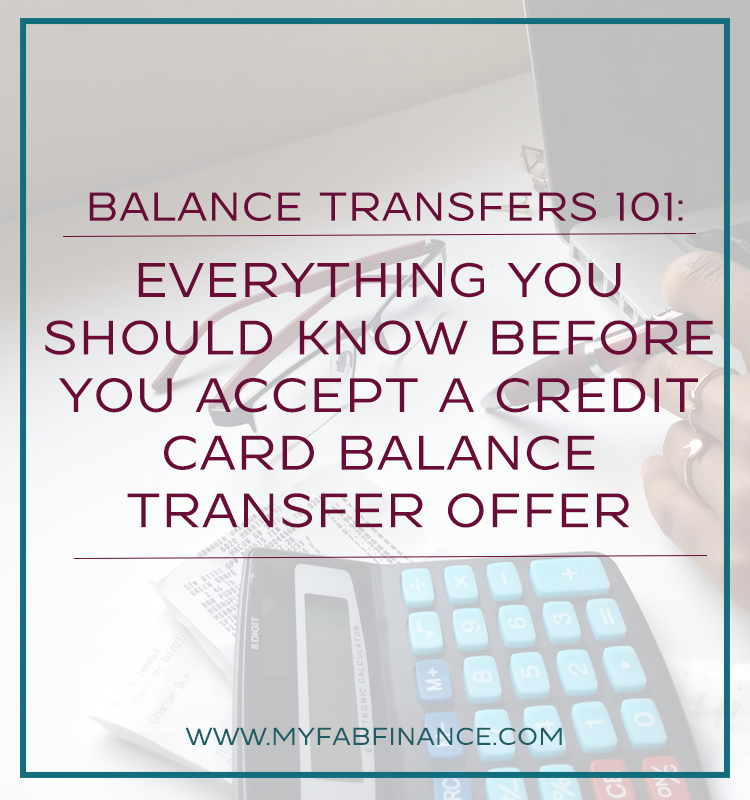In an ideal world, no one would carry a credit card balance from month to month.Many of us use credit with the intentions of paying the balances in full, then life happens. As time progresses the debt accumulates with interest every month making it more difficult to pay off. If you’re reading this, you are probably in search of a way to save money and get out of debt quicker. A credit card balance transfer may be the solution you are seeking.
What is a balance transfer?
A balance transfer is a process where debt from a high interest credit card is transferred to a new credit card with a low or no introductory interest rate. The goal of a balance transfer is to save money by reducing the amount of fees paid during a certain period.
For example, if someone has a $2,000 balance on a credit card with a 16 percent interest rate, they make monthly payments of $150. At this rate, they will pay the balance off in 16 months with a total of $313.81 paid in interest. If they find a credit card with a balance transfer option that offers zero percent interest for 18 months and no transfer fee, they will save $313.81.
Who is a good candidate?
Balance transfer offers with the best terms and lowest introductory interest rates are typically reserved for those who have good (680 to 749) or excellent (750 or above) credit scores. If you have multiple credit cards with various due dates, a balance transfer simplifies finances by consolidating debt onto one card with a single interest rate and the same due date. Anyone who wants to pay debt off quickly and save on interest paid will find a balance transfer to be a viable option.
What should you consider?
Balance Transfer Fees
If you want to transfer a balance onto a new credit card, there’s a possibility you will be charged a fee. Some cards offers include zero balance transfer fees; however, these are uncommon. Many cards charge 3 to 5 percent of the balance being transferred.
Using the example mentioned previously, if you transferred $2,000 to a card with a 3 percent transfer fee, it would cost $60. This would result in savings of only $253.81 instead of $313.81; however, it is still a great savings if the borrower pays off the balance in full within the 18 month introductory period.
New Purchases May Not Be Wise
Introductory interest rates may only be applicable to the balances transferred. If you intend to use this card for new purchases, regular interest rates may apply. Also, if you make new purchases, you might not be able to determine how payments are allocated.
If you want to pay more than the standard monthly payment, the additional payment may be allocated towards the new purchases that are incurring interest and not the initial balance transfer.Therefore, it may be in your best interest to use this card for the sole purpose of transferring a balance versus future purchases.
Repeat Transfers Could Do More Harm
In specific circumstances, using a balance transfer as a way to shift debt from one card to another may be harmful.
Repeat balance transfers can negatively impact your credit score if you have high levels of debt. Click To TweetCreditors view this as a higher risk and this practice could hurt your chances of qualifying for other types of loans such as mortgages and auto loans.
If you are unable to pay the entire balance within the introductory interest rate period, ensure that the regular APR on the new card is not higher than the previous one. Balance transfers do not pay off the debt owed. The purpose is to save money on the interest paid, not avoid paying off the debt.
Seek the credit card offer applicable to your credit score and one that offers the best terms. You want to find a card with a low transfer fee and an introductory rate that gives you enough time to pay your debt in full. Use your balance transfer card wisely, and you will not only save money but also get out of debt quicker than you would with your existing credit card. If you are interested in simplifying your credit card payments and saving money on interest, compare fees, terms, and rates on these balance transfer offers.
Latoya is a writer for hire who loves talking about budgets and money. Her mission includes paying off $79,000 in student loans and living to tell about it. She’s a full-time, work-at-home mama who shares her journey over at Life and A Budget. You can connect with her on Twitter and Facebook.
[sa_captivate]

You said: